Looking out for koalas
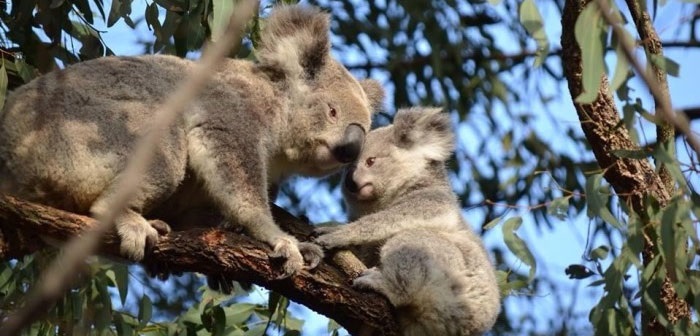
Photo by Ricardo Lonza, spotting a koala and her bub
- Some reserves are quite large and have cliffs and other natural hazards.
- Ensure you keep to existing tracks and that your dog is on a leash at all times.
- If you do find a koala, remain as quiet as possible and if it is night, do not shine torches in its eyes (it can hurt them) and never post exact locations of koalas on social media (we want to keep our koalas safe).
- Remember to leave only footprints and take only photos so that the areas remain beautiful for everyone else.
When you arrive - walk into the reserve, stop, listen, take a few deep breaths and enjoy nature then begin looking for:
Koala food trees
Koala food trees are the lifeblood of our koalas and their leaves provide the main source of nutrition and hydration to keep them healthy. Koalas are only attracted to particular species of eucalyptus/gum trees with different species providing different nutrient levels. There are also other species that provide shelter but are not eaten.
Koala food trees in Campbelltown include:
- Grey Gum (Eucalyptus punctata)
- Blue-leaved Stringybark (Eucalyptus agglomerate)
- Woolybutt (Eucalyptus longifolia)
- Forest Red Gum (Eucalyptus tereticornis)
- Ribbon Gum (Eucalyptus viminalis)
- Grey Box (Eucalyptus molucanna)
- Turpentine (Syncarpia glomulifera) (Shelter Tree)
- Brush Box (Lophostemon confertus) (Shelter Tree)
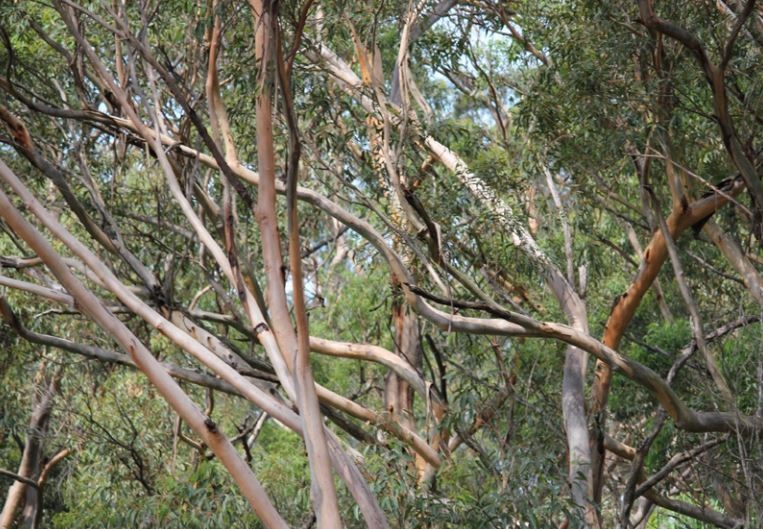
Koalas are well camouflaged and can be difficult to spot. They are usually perched high up in the tree canopy safe from predators and are usually sleeping during the day. From the ground, a koala may appear to be a grey bump in the fork of a branch.
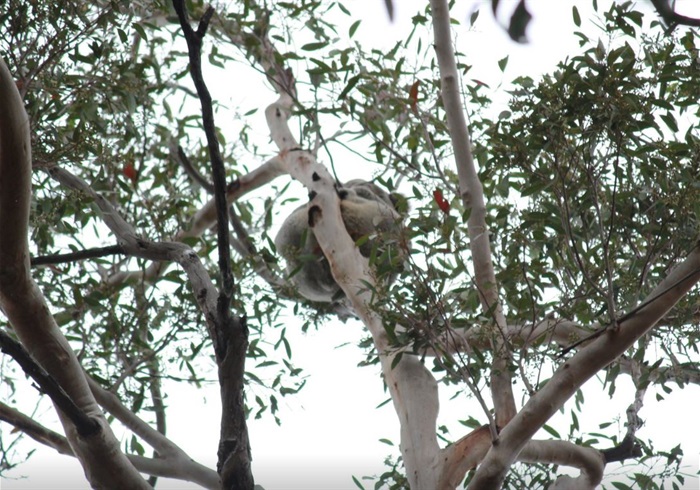
Another way to look for evidence of koalas is to a look for scats (poo) below a koala food tree or for koala scratch marks on the tree trunk.
Scats
Koala scat is about the size and shape of an olive pit which when fresh, is usually dark greenish in colour and when dried out turns dark blue-green. These pellets smell strongly of musky eucalyptus and contain densely packed fibres with no hair inside. The fresher the pellet and the more abundant, the more likely a koala is close by or overhead.
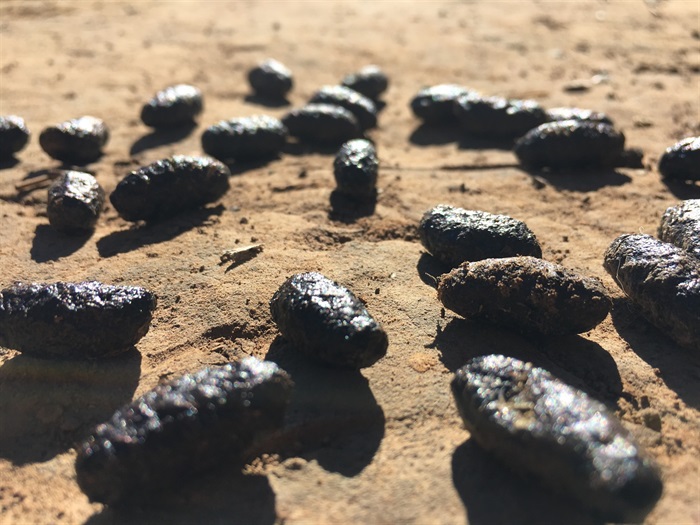
Scratch marks
Koala scratch marks are distinctive and are generally shown by three deep claw marks on the bark of trees that they climb. These scratches are more visible on smooth barked trees such as a Grey Gum (Eucalyptus punctata). If you think you have found koala scratch marks on the trunk of a tree, have a look around the base for any signs of koala scat and search for a grey bump in the tree forks.
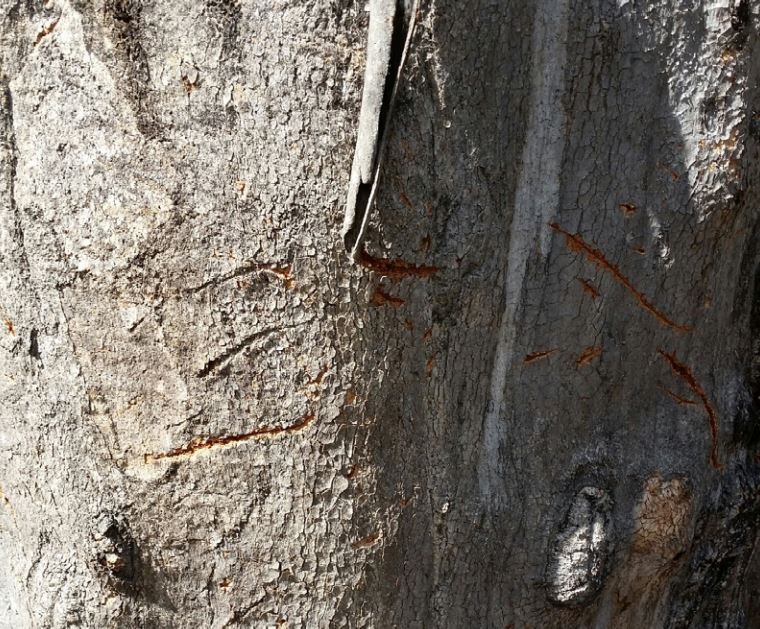
Koala mating calls
If you are brave enough to venture out at night, listen for the koalas’ bellowing noise which sounds like a loud snore and then burp or some say, like a wild pig.
Check out Taronga Zoos video of a koala mating call.
Good luck.